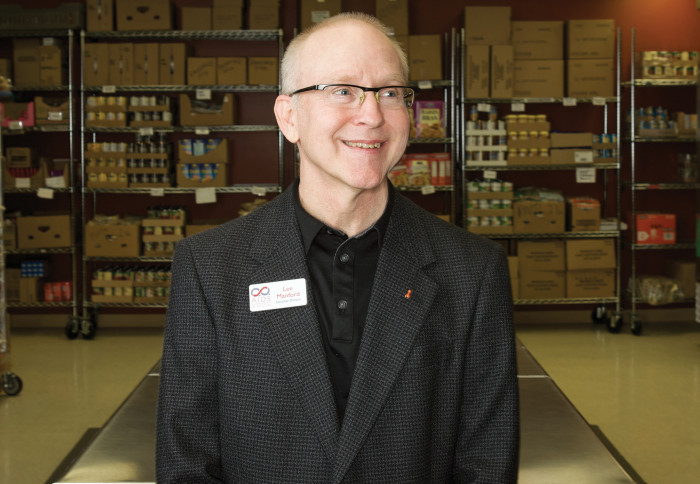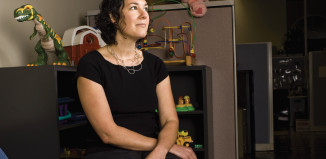When he came to Austin in 1981 as an officer with Capital National Bank, it’s doubtful that Lee Manford had even an inkling of the direction his career would turn. Now, after 12 years of leading AIDS Services of Austin as executive director, he’s retiring and planning to relax with his partner, Casey.
To say the least, it’s been an achievement-filled ride for Manford and ASA. He started as the executive director on Dec 1, 1997 – World AIDS Day. Under his leadership, ASA’s staff has grown to more than 50 people. The annual budget has risen from $3.2 million to more than $4.6 million – a 40 per- cent increase. The organization currently serves 10,000 people through prevention efforts and 1,500 people who are living with HIV or AIDS.
As a bit of history, in 1984, the Austin AIDS project was spawned from the Waterloo Counseling Center. At the time, Manford was immersed in being a volunteer with the group, mainly as the keeper of the checkbook, thanks to his banking background.
“One of the key volunteers had left and they recruited me,” he says.
In 1987, the leaders of the group renamed it AIDS Services of Austin and attained 501(c)(3) nonprofit status. At that point, they needed a board of directors, and many members of the steering committee were named to it. Manford was appointed chair. All too soon, the cause became very personal for him when his partner was diagnosed with the disease.
“That was 1987,” he says. “He died in April 1990.”
After that tragedy, Manford threw himself in to fighting the AIDS cause with even more fervor.
“Among other things we were doing, the AIDS Memorial Quilt was a favorite project to take on, and gratifying to be part of,” he says.
But he wanted to be involved on a broader perspective locally. It was obvious that there needed to be a local coordination to respond to AIDS.
“Towards that end, we started an HIV planning council to bring together our community’s efforts in an effective manner,” Manford says.
About 1994, Ryan White funding began being offered. Up until then, Manford had been a volunteer, had helped create the nonprofit organization and had been a leader in building community relations. So he learned how to gain federal funding through the grant process.
“To be eligible for this money, we had to assemble documentation on 2,000 diagnoses in the community,” he says. “This was a significant undertaking, but we got it done.”
All these accomplishments under his belt, Manford was approached in 1997 to be the executive director of ASA, and he felt comfortable saying yes.
Looking back at the past 12 years, Manford points to a number of successes. Of course, one of the most visible achievements came in 1999 when the group acquired and finished out the ASA headquarters building on Cameron Road. In 1997, we realized that we were going to be around for a longtime. From a business perspective, it was prudent to purchase a home for our work,” Manford says.
He adds that the building has served ASA well for 10 years. Among other things, it has helped to fix the organization’s occupancy costs and assured ASA’s stability. In the building, they now offer a food pantry plus two dieticians to counsel clients on nutrition, case-management services, financial assistance, legal advice, and prevention services, as well as administration for the organization.
As for ASA’s place in the community, Manford emphasizes that the group has always had a collaborative approach. They have worked closely with groups like Project Transitions, the David Powell Clinic and the Wright House Wellness Center.
“We have held on to our origins in that respect,” Manford says. “And we have improved our ability to manage the disease and treat it like a chronic illness.” Though some people think that the problem is solved, it is still a moving target. “The virus is tough and it mutates quickly. Because of that, the demand for developing treatments is still high. We are much better at testing now and we know that some treatments work better for certain types of cases.”
On a positive note, Manford says the ASA has had some individuals who came in thinking they would not live two more years, but have survived for more than a decade.
Manford notes he’s come to understand that there are varying groups of clients. Some clients, because of the stigma around HIV, wait until their condition reaches a crisis level to get assistance. Also, they may be uninsured, be living at the poverty level or have mental-health or substance-abuse issues. While some of these clients’ illnesses are too advanced, a portion of them are not.
“Hope is a big component of our work,” he says. “Sometimes we can turn them around, but they can be too far gone towards the end stage.”
In addition to these difficult cases, there are people who can stabilize their lives with minimal amounts of financial assistance, housing and nutrition. With advice, they can self-manage and survive.
In all cases, they use a mixture of services, from nutrition to psychological counseling and medicine. “All the work we do is complex,” Manford says. “We seek a client-centered approach and try to address the disease within the context of their lives.”
No doubt, with the kind of issues ASA faces, a capable hand is needed at the top. But ASA patrons and clients need not worry – Manford is sticking around until his successor is chosen, and he’ll ensure that the needed continuity will be maintained. Of course, the board of directors is still in place as well.
“Our strong board has always been one of our best assets,” Manford says. “We have a varied set of skills in a good mix to meet our needs.”
Find out more about AIDS Services of Austin, visit www.asaaustin.org.




































